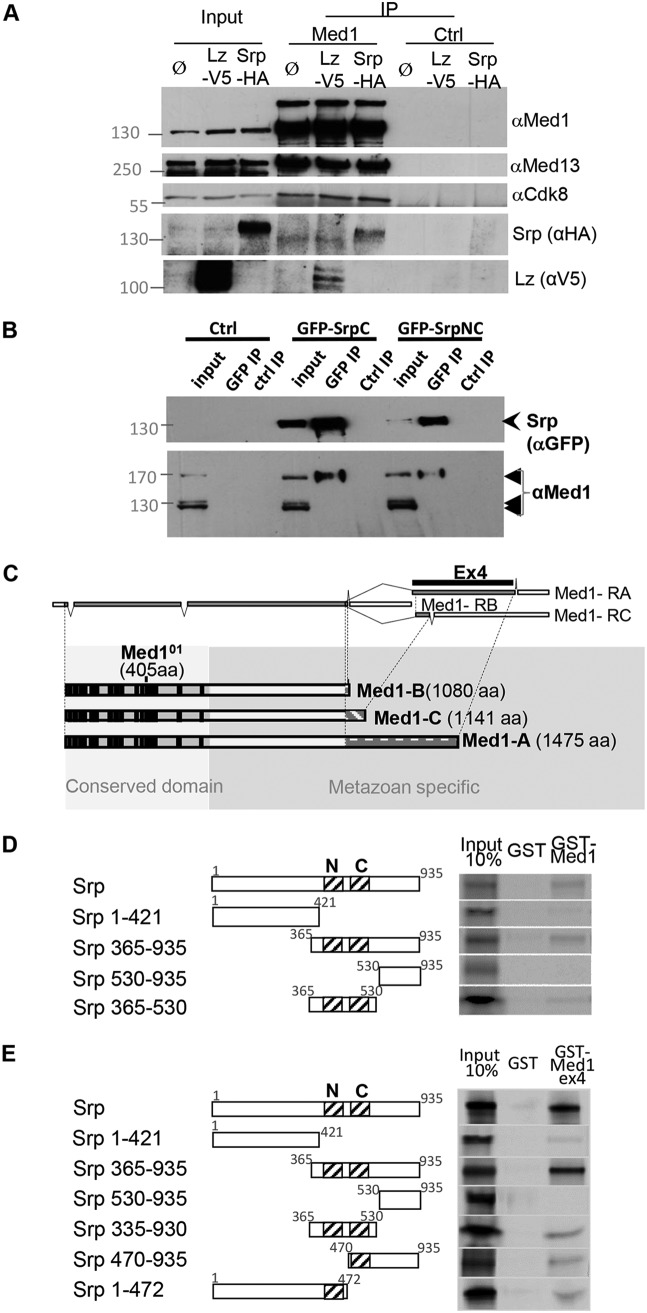FIG 2.
Med1 interacts physically with GATA/Srp. (A) Coimmunoprecipitation experiments from Drosophila Kc167 cells transfected with pAc-Srp-HA or pAc-Lz-V5 using guinea pig anti-Med1 antibody or a nonrelevant (NR) guinea pig antibody (anti-Tyn) (ctrl IP) revealed by Western blotting against Med1, Med13, Cdk8, HA tag (Srp), or V5 tag (Lz). (B) Reverse coimmunoprecipitation experiments from Drosophila Kc167 cells transfected with pAc-GFP-SrpC or pAc-GFP-SrpNC using a rabbit anti-GFP antibody or a control rabbit preimmune serum (ctrl IP) revealed by Western blot analysis against the Med1 or GFP tag. (C) Map of the three alternatively spliced transcripts of Med1, with white boxes depicting untranslated sequences and gray boxes depicting the coding sequences, separated by intronic regions (lines). The exon 4 region (ex4) used to produce the Med1A isoform-specific protein fragment is indicated. In the lower part is a scheme of the three Med1 isoforms with amino acid numbers indicated. Black boxes represent highly conserved regions within the yeast Med1 orthologue, and white boxes represent the nonconserved metazoan-specific extension differing in their C termini, depending on the Med1 isoform considered. (D and E) GST pulldown binding assays of full-length 35S-SrpNC or protein fragments to immobilized GST-Med1 fusion (D) or GST-Med1ex4 fusion (E) corresponding to the C-terminal protein sequence specific to the longest Med1A isoform.

